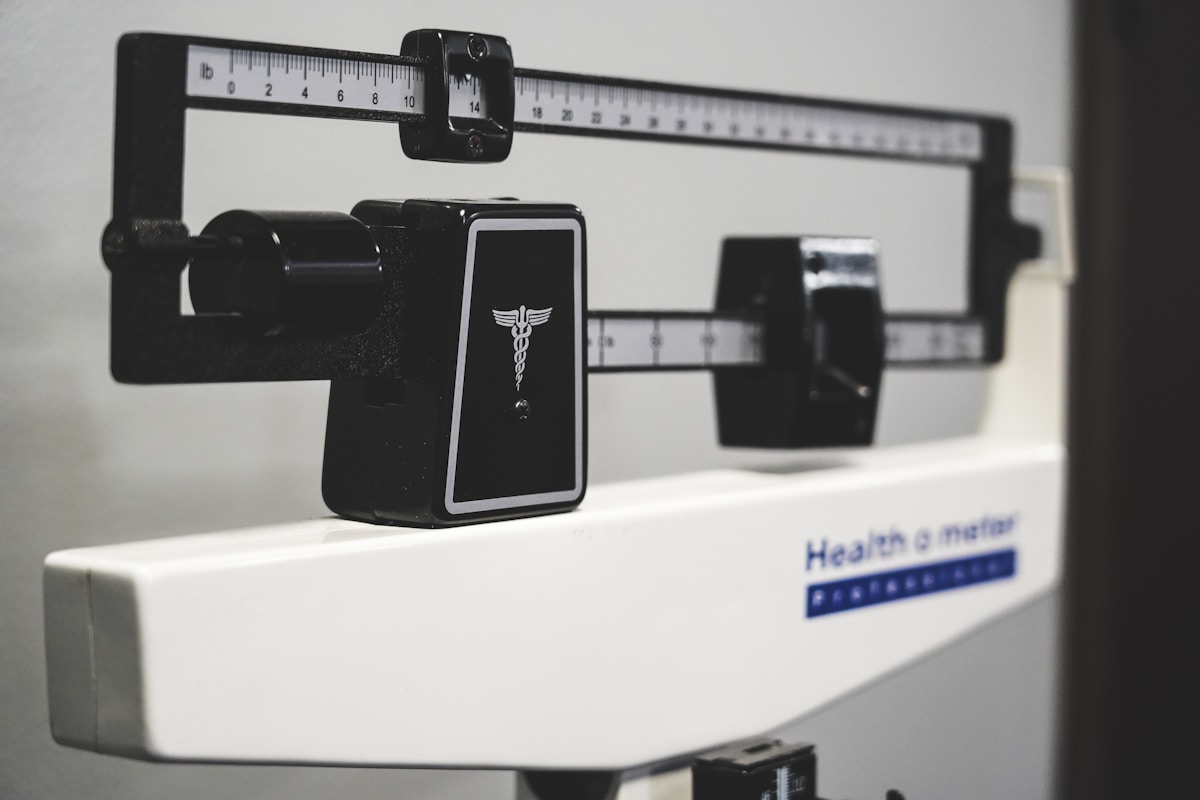The Obesity Reckoning is Here

What happens after the pandemic will determine the health of more than half of Americans.
A WHITE PAPER By Medical technology firm Intellihealth
PART 1
Covid shined a light on the obesity epidemic
In the early days of the pandemic, we knew very little about how the virus was spread, or whether masks were effective, or how long we’d have to wait for effective vaccines; but one thing quickly became clear: obesity heightens the dangers of COVID-19.
In 2018, 42 percent of Americans had obesity, which has dire health and financial consequences. That number has unquestionably grown in the wake of the pandemic, which means nearly half the country could have worse health outcomes if they are infected with the coronavirus.
People with obesity are more likely to be hospitalized, require respiratory support, and, worse, die from COVID-19.2 Even minor symptoms such as coughing, loss of taste, and shortness of breath may be more severe and last longer in patients with excess weight.
As vaccines came online and were approved for at-risk populations, many patients who might have been in denial about their excess weight were forced (or pleased) to recognize that obesity was considered an underlying condition and they were eligible to be among the first to get their shots.
A recent study by the CDC found that 16 states now have obesity rates of 35 percent or higher. Ten years ago, not a single state reported that rate.
PART 2
We must treat obesity as the disease it is

What Is Obesity?
Obesity is not a lifestyle issue. In 2013, the American Medical Association declared obesity a disease. Prominent medical groups also recognize that obesity is a multi-causal chronic disease, including the World Health Organization, the American Heart Association, the American College of Surgeons, the Food and Drug Administration, and the National Institutes of Health.
While the definition of obesity as the abnormal or excessive accumulation of fat that may impair health is simple to comprehend, what causes obesity is more complicated. From the discovery of leptin’s impact on the weight of mice in the 1990s5 to more recent breakthroughs in glucagon like peptide-1 medications, we are only starting to fully grasp all of the systems that regulate how much weight a body stores.
In many ways, our current understanding of obesity, and the ways it’s treated, echo how the medical community approached hypertension in the mid-20th century.
In 1967, the Veterans Administration Cooperative study proved that medications reduced mortality in men with high blood pressure.
Before then, patients were encouraged to make lifestyle modifications, which were effective only if they strictly followed these changes. The combination of behavioral changes and pharmacotherapy forever changed the perception of hypertension as a lifestyle issue, and countless lives have been saved as a result.
The Risks of Not Treating Obesity

Obesity is a leading contributor to over 200 diseases: type 2 diabetes, heart disease, many types of cancer, and non-alcoholic fatty liver disease. All of these diseases and comorbidities have a link to excess weight, and their severity could be reduced by addressing the underlying issue of obesity.
According to the World Health Organization, almost 3 million people die as a result of obesity or excess weight each year.7 And the National Institutes of Health has reported that obesity and overweight are now the second leading cause of death nationally.
Perhaps that’s because unlike the more than 80 percent of patients with diabetes who receive treatment for their disease, less than 2 percent of patients with obesity or overweight are treated according to the latest guidelines.
80% of diabetes patients receive treatment for their disease vs 2% of patients with obesity or overweight receive treatment for their disease.
Obesity is also an economic burden, leading to more than $210 billion a year in direct medical costs.
Indirect costs, such as employer expenses, absenteeism, and lost productivity add up to as much as $500 billion annually. For adults with obesity, that translates to more than $3,500 in medical care costs per patient each year.
Conversely, for a patient with class III obesity, a weight loss of as little as 5 percent can lead to an annual $10,000+ reduction in prescription drug costs per patient.
Why Is Treating Obesity So Difficult?

There are many underlying factors that cause excess weight, including genetics, medications, and comorbid health conditions (e.g., obstructive sleep apnea and insulin resistance). Losing weight is not just about diet and exercise.
The first step in understanding how to treat patients with obesity effectively and compassionately is to recognize that obesity is a multifactorial, chronic disease. The successful treatment of obesity requires a multidisciplinary approach including not only diet, physical activity, and behavioral modifications, but also advanced treatments such as pharmacotherapy along with surgical interventions, when appropriate.
PART 3
Scaling treatment despite a lack of trained providers
The lack of physicians and other healthcare providers who are trained and certified in obesity medicine is an enormous factor leading to the discrepancy between patients with obesity who could benefit from medical treatment and the small number of those who actually receive it. Though 42 percent of Americans (or roughly 137 million people) have obesity, there are fewer than 6,000 physicians certified by the American Board of Obesity Medicine (ABOM) to deliver the comprehensive medical treatment required to treat it effectively.
There are fewer than 100 fellowship trained obesity medicine specialists in the US who have gone through year-long programs within leading academic institutions. Do the math and you can see the supply-demand mismatch—and the chasm between the disease and its treatment.
Geography is also a hurdle. Many ABOM certified providers live in urban centers near the academic institutions where they practice, while patients with obesity are spread throughout the nation and often live in areas where a visit to any healthcare facility takes up the better part of their day.
The solution to both geographic and supply-demand challenges is tech-enabled tools that scale the limited clinical resources available and bridge the distance between patients and providers.
Telehealth
Video visits got a big boost during COVID-19 lockdowns. Today, people with obesity are able to meet remotely but still face-to-face with physicians, registered dietitians, behavior coaches, and other clinicians for weight loss guidance and support.
Quarterly visits with physicians, monthly check-ins with nurse practitioners, and bi-weekly chats with registered dietitians no longer require travel or taking time off work. Additionally, the use of telehealth tools allows patients to join online support groups with other people who are on their own weight-loss journey to add extra support to their care.

Clinical Decision Support
With advances in clinical decision support software, patients can answer dynamic sets of questions about their health history, weight history, eating triggers/habits, sleep, and physicalhe activity to determine a personalized obesity treatment plan. Clinical decision support tools empower healthcare providers to better understand where a patient is today and where they have been previously in terms of their weight and health to deliver specialized medical care for obesity treatment and care coordination.
Clinical decision support tools can recognize patient healthcare patterns—such as medication-induced weight gain—and then generate algorithms that deliver customized behavioral and pharmacotherapy treatment plans designed to best assist the patient during their weight-loss and maintenance journey. These tools combined with other patient health management capabilities enable clinical providers to monitor a patient’s weight-loss trajectory and adjust medications and behavioral programming as needed.
Remote Patient Monitoring
Using Bluetooth and wifi-connected scales, blood pressure cuffs, pulse oximeters, and glucose meters that sync a patient’s health monitoring and outcome data through their phones, clinical providers are able to monitor their patient’s health from anywhere at any time of day. These insights empower clinicians to make real-time adjustments to treatment or medications, and to monitor progress or catch weight plateaus.
Online Education Tools
Patients and clinical providers alike benefit from ongoing education about weight management and treating the disease of obesity. With online training courses and articles, patients learn about which nutrition plans work best for their lifestyle; how to be more active and make healthier food choices; the importance of setting goals; and logging their weight, food, and physical activity.
Likewise, clinical providers can deep dive into topics such as the physiology of obesity, pharmacotherapy, how to set up an obesity practice, and the latest research on new medications and surgical interventions.
CONCLUSION

Obesity was a public health crisis long before the pandemic. As we look to recover from the COVID-19 pandemic, and possibly face the next one, we must address the obesity epidemic as well. The first step is putting clinical decision support and software tools in the hands of clinical providers to help their patients effectively scale medical obesity treatment for the millions of Americans who need it most.
1 Adult Obesity Facts, CDC, 2021, https://www.cdc.gov/obesity/data/adult.html
2 COVID-19, People with Certain Medical Conditions, CDC, October 2021
https://www.cdc.gov/coronavirus/2019-ncov/need-extra-precautions/people-with-medical-conditions.html
3 Obesity Made EvenMild COVID Worse, Molly Walker, MedPage Today, October 2021
https://www.medpagetoday.com/infectiousdisease/covid19/
95136?xid=nl_mpt_SRPrimaryCare_2021-10-20&eun=g952211d0r&
4 Obesity Rates Rise During Pandemic, Fueled By Stress, Job Loss, Sedentary Lifestyle, Yuki NOguchi, NPR, September 2021, https://www.npr.org/sections/health-shots/2021/09/29/1041515129/
obesity-rates-rise-during-pandemic-fueled-by-stress-job-loss-sedentary-lifestyle
5 Leading the charge in leptin research: an interview with Jeffrey Friedman, Disease Models & Mechanisms, 2012, https://journals.biologists.com/dmm/article/5/5/576/3245/Leading-the-charge-in-leptin-research-an-interview
6 Is Obesity the New Hypertension? Parallels in the Evolution of Obesity and Hypertension as Recognized Disease States, Umashanker et al, Current Atherosclerosis Reports, June 2017, https://pubmed.ncbi.nlm.nih.gov/28660593/
7 Obesity, WHO, June 2021, https://www.who.int/news-room/facts-in-pictures/detail/6-facts-on-obesity
8 Savings in Medical Expenditures Associated with Reductions in Body Mass Index Among US Adults with Obesity, by Diabetes Status, Cawley et al, PharmacoEconomics, 2014, https://pubmed.ncbi.nlm.nih.gov/25381647/
9 Prevalence of Obesity and Severe Obesity Among Adults: United States, 2017–2018, Hales et al., CDC, 2020, https://www.cdc.gov/nchs/products/databriefs/db360.htm
10 American Board of Obesity Medicine 2021. https://www.abom.org/stats-data-2/
11 Obesity Medicine Fellowship Council, https://omfellowship.org/alumni-listing/
Contact Us Intellihealth offers a clinically proven medical obesity treatment approach that is three times more effective than lifestyle intervention alone. Our flagship product, Evolve, enables medical providers to offer effective medical obesity treatment to new and existing patients, both via telehealth and in person. More information and a product demonstration can be found at www.intellihealth.co

